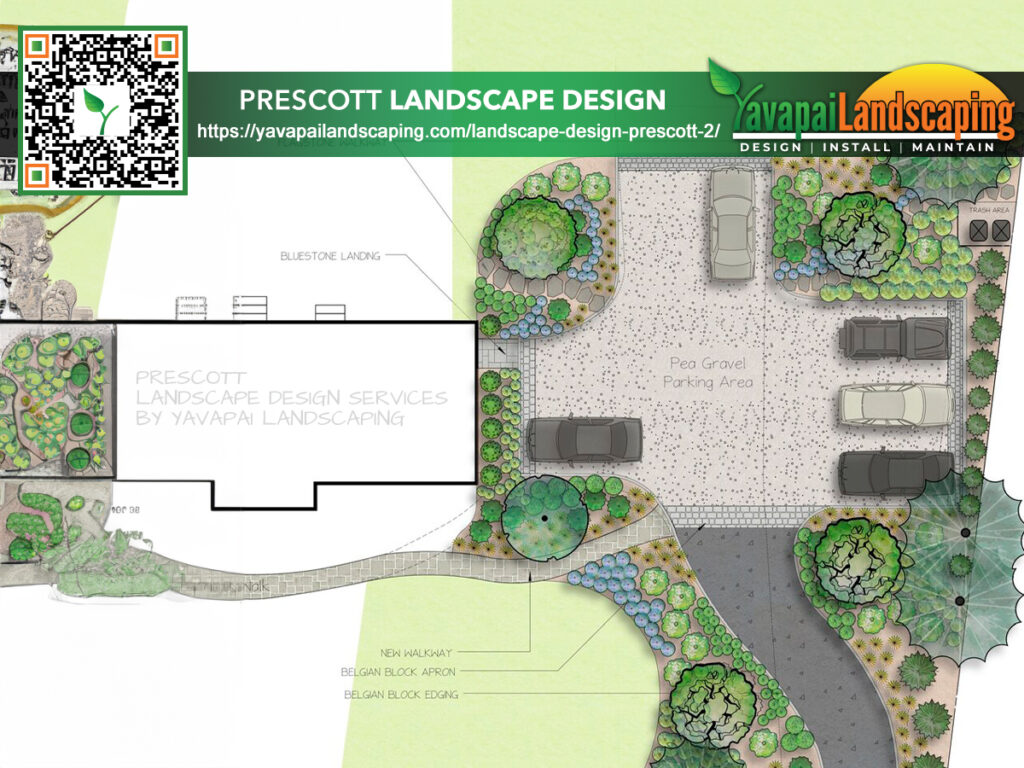
In today’s eco-conscious world, sustainable landscaping is key. It makes outdoor spaces beautiful yet earth-friendly. Designers use native plants and drought-tolerant plants, rainwater harvesting, and permeable paving. They also apply xeriscaping and green roofs. These methods help minimize harm to the planet.
This approach also includes integrated pest management and composting. Designers focus on biodiversity. This ensures that landscapes have a positive effect on nature. It all comes together to create stunning, eco-friendly designs.
Key Takeaways
- Sustainable landscaping prioritizes environmental conservation and resource efficiency.
- Incorporating native and drought-tolerant plants can reduce water consumption and maintenance.
- Rainwater harvesting systems collect and store rainwater for irrigation and non-potable uses.
- Permeable paving allows water to infiltrate the ground, reducing stormwater runoff.
- Xeriscaping techniques emphasize water-saving strategies for arid and semi-arid regions.
- Green roofs provide insulation, mitigate the urban heat island effect, and create wildlife habitats.
- Integrated pest management combines eco-friendly strategies to control pests effectively.
Understanding Sustainable Landscaping
Sustainable landscaping is a way to create and care for outdoor areas that are earth-friendly. It saves water for plants that don’t need a lot of it and with smart irrigation. This method cuts down on using gas for tools and also lessens how often you need to work on the area. In addition, it helps local animals by giving them a place to live and lowers the harm to the planet by choosing materials wisely. Immerse yourself in the brilliance of this enlightening article.
Benefits of Sustainable Landscaping
Choosing sustainable landscaping has many pluses for homeowners and the planet. It saves water with certain plants and smart water use practices. The method also uses less energy, creates homes for wildlife, and helps the environment by reducing waste and pollution.

Principles of Sustainable Landscape Design
This type of design aims for beauty that works with nature, not against it. The focus is on using local plants that need less water and care. It also manages water well, keeps the soil healthy, supports many kinds of plants and animals, and values reducing our waste.
| Principle | Description | Benefits |
|---|---|---|
| Native Plant Selection | Using plants naturally adapted to the local climate and soil conditions. | Reduced water needs, lower maintenance, and enhanced habitat for wildlife. |
| Water Management | Implementing strategies like rainwater harvesting, efficient irrigation, and xeriscaping. | Water conservation, reduced runoff, and lower water bills. |
| Soil Health | Promoting healthy soil through composting, mulching, and organic matter incorporation. | Improved soil fertility, structure, and water-holding capacity. |
| Biodiversity | Creating diverse habitats for various plant and animal species. | Balanced ecosystem, enhanced natural pest control, and environmental resilience. |
How to Implement Sustainable Landscaping Techniques in Modern Landscape Design?
Sustainable landscaping uses eco-friendly methods for beautiful outdoor spaces. It saves water, energy, and wildlife habitats. Homeowners and pros make a big difference with these strategies.
Choosing Native and Drought-Tolerant Plants
Native and drought-tolerant plants reduce the need for lots of water and chemicals. They support local wildlife, like bees and birds. Selecting the right plants means less work and a healthier environment.
Implementing Rainwater Harvesting Systems
Collecting rainwater reduces water waste and bills. It’s good for the earth. Systems include barrels, tanks, and more. They keep your plants happy without using drinking water.
Incorporating Permeable Paving
Permeable paving lets water soak into the ground. It avoids runoff and helps with flooding. Driveways and walkways can still look great while being eco-friendly.

Practicing Xeriscaping
Xeriscaping uses plants and systems that need little water. It’s perfect for dry areas. This approach saves water without sacrificing a nice yard.
Utilizing Green Roofs
Green roofs use plants on top of buildings. They keep the inside cool, help with rain, and make homes for bugs. Energy use goes down with these roofs, and the area is more pleasant for all.
Adopting Integrated Pest Management
IPM is a careful way to deal with pests that are also earth-friendly. It aims to keep the ecosystem safe. Using beneficial bugs and smart practices keeps gardens healthy without harming the environment.
Encouraging Composting and Biodiversity
Composting is great for the soil and cuts back on harmful chemicals. It brings back a healthy balance to the land by inviting many types of life. Support for compost and wildlife helps create a durable and lively outdoor space.
Conclusion
Using sustainable landscaping techniques now is key to a greener future. It helps our environment and ensures things last a long time. This includes using plants that belong and can handle little water, saving rainwater, and paving in a way that water can soak through.
Adding ideas like xeriscaping, green roofs, and integrated pest management helps even more. They save water and power and make space for living things. These ways also make the ground better by composting, leading to a lively and balanced area.
When we follow these ways, we all help make the future better. Our actions in our yards can really matter, helping the earth and making life last. We should care for our world and choose wisely to make beautiful, lasting places that protect our planet for those to come.
Yavapai Landscaping Prescott offers free quotations for Prescott and its nearby localities for landscaping and tree services. These include tree removal, trimming, stump grinding, land clearance, storm clean up, irrigation, and emergency tree service.
